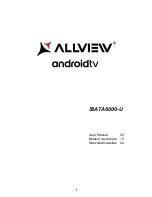
1-5. Safety Check-Out
After correcting the original service problem, perform the following safety checks
before releasing the set to the customer:-
1) Check the area of your repair for unsoldered or poorly soldered connections. Check the
entire board surface for solder splashes and bridges.
2) Check the inter board wiring to ensure that no wires are pinched or contact high-
wattage resistors.
3) Check all control knobs, shields, covers, ground straps and mounting hardware have
been replaced. Be absolutely certain you have replaced all the insulators.
4) Look for unauthorized replacement parts, particularly transistors that were installed
during a previous repair. Point them out to the customer and recommend their replacement.
5) Look for parts which show obvious signs of deterioration even though functioning. Point
them to the customer and recommend for replacement.
6) Check the line cords for cracks and abrasion. Recommend the replacement of any such
line cord to the customer.
7) Check the antenna terminals, metal trim, metalized knobs, screws and all other exposed
metal parts for AC leakage. Check leakage test as described next.
8. For safety reasons, repairing the Power board and/or Inverter board is prohibited.
1-6. Leakage Test.
(To protect electric shock when customer touch the terminal.).
Leakage current can be measured by V: Voltmeter or oscilloscope (r.m.s. or peak reading).
Stabilized power supply instrument and isolated voltage transformer:
Use too much current capacity and isolated voltage transformer does not need to use
stabilized power supply equipment.
Specification of RMS volt meter: Input resistance > 1 Mohm, Input capacitance < 200 pF,
Frequency range: 15 Hz – 1MHz . Refer Figure 2. Isolated type volt -meter (FLUKE 8921A
etc *1).
*1 Not use FLUKE 8920A that connected to protective earth by diode.
# Leakage current of measurement instrument is less than 10μArms when under test
equipment AC plug is opened.
# Set up the following condition and turn on the set. Applied voltage: Nominal input voltage
(Description on Nameplate).
# Measure the leakage current between one phase conductor and neutral for terminal A and
terminal B.
Read rms value, and then calculate to peak value PEAK VALUE =√2 RMS VALUE.
Comply with the following requirement.
Class II equipment (2-pin plug): for each terminal, the worst value of measurement must
not exceed AC 350uA peak).
Note: including AC adaptor, AC adaptor/DC operated unit combination.
Figure 2 – Measuring network for Leakage Current
9
SAFETY NOTES










































